Bage Mani Wall’s full name is “The Bage Mani Stone Scripture Wall” which resembles a city wall in appearance, standing approximately 3 meters high and 2 to 3 meters thick, with a total length of around 1,700 meters. From an aerial view, it looks like a Great Wall on the grasslands, grand and magnificent, ancient and solemn.
This stone scripture wall is located in Changshagongma Township, Shiqu (Sershul) County, Sichuan, about 50 kilometers from Shiqu’s county seat.
It was first built in 1640 AD by the 1st Bage Lama, Sangden Phuntsok.
The 2nd Bage Lama, Khenrab Dorje, not only expanded the stone scripture wall but also regularly held the Wheel-Turning Dharma Assembly there.
Subsequently, the 3rd Bage Lama, Nime Chökyi Ongpo, and the 4th Bage Lama, Gönkhyab Chönyi Dorje, also carried out multiple renovations and expansions of the wall.
The Bage Mani Stone Scripture Wall is regarded as a treasure trove of stone carving art. It features over 3,000 carved images of Buddhas and deities, along with Tibetan Buddhist scriptures such as the Kangyur, Tengyur, the Bhadrakalpika Sūtra, and the Sutra of Liberation. Additionally, there are countless mani stone slabs of various sizes.
This stone scripture wall is a cultural heritage site of the Kham Tibetan region with a long history and immense artistic value. Its carving techniques are exquisite and uniquely distinctive.
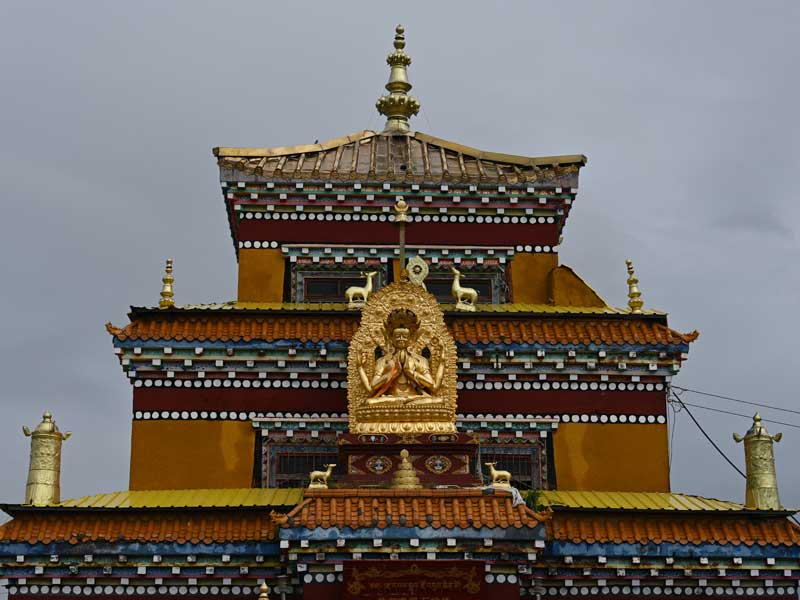
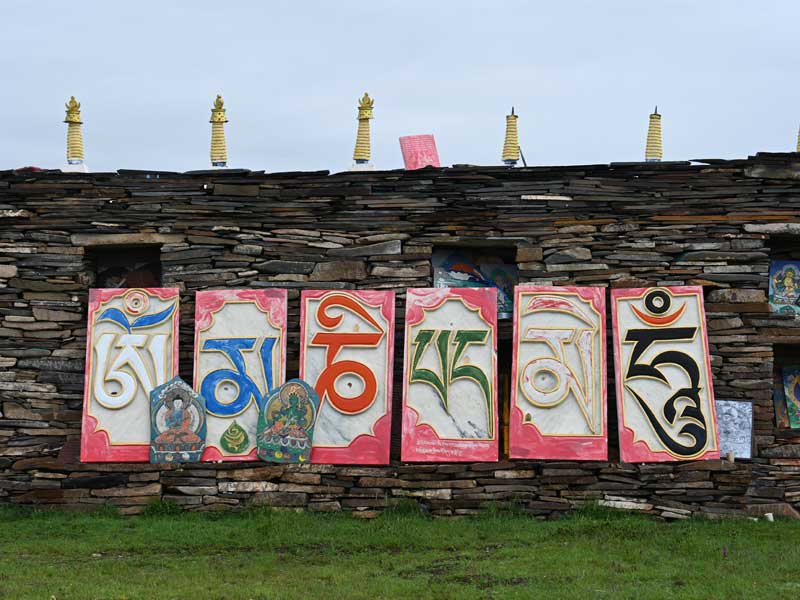
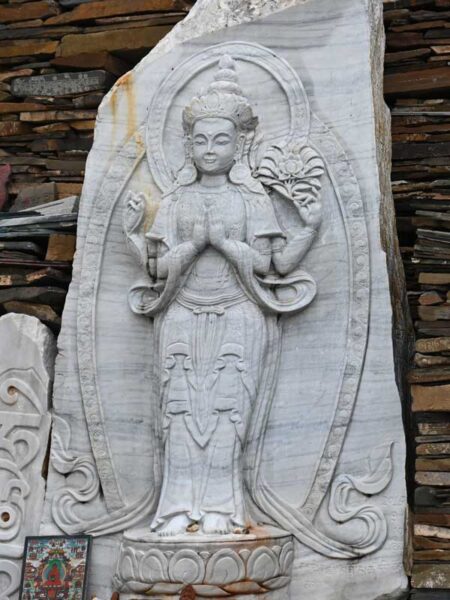
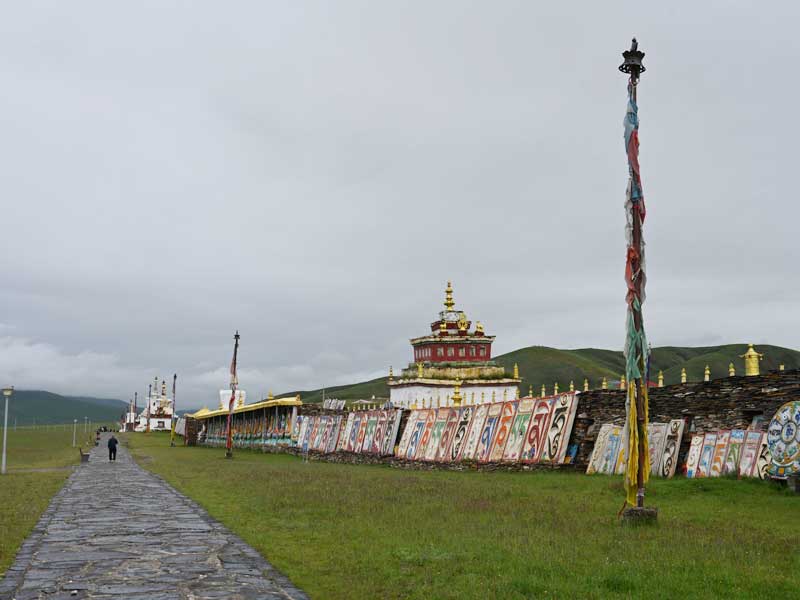
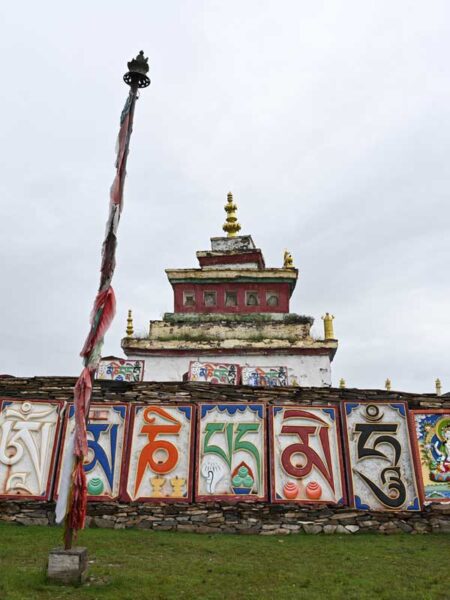
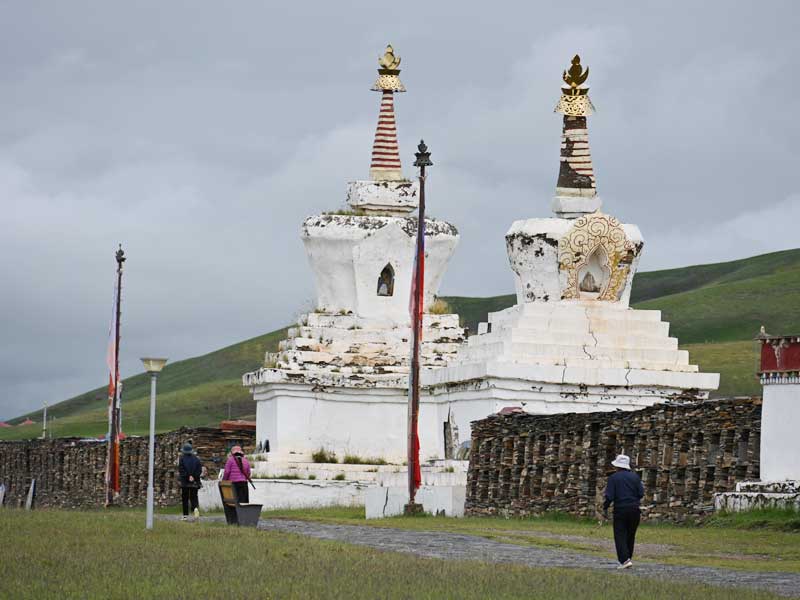
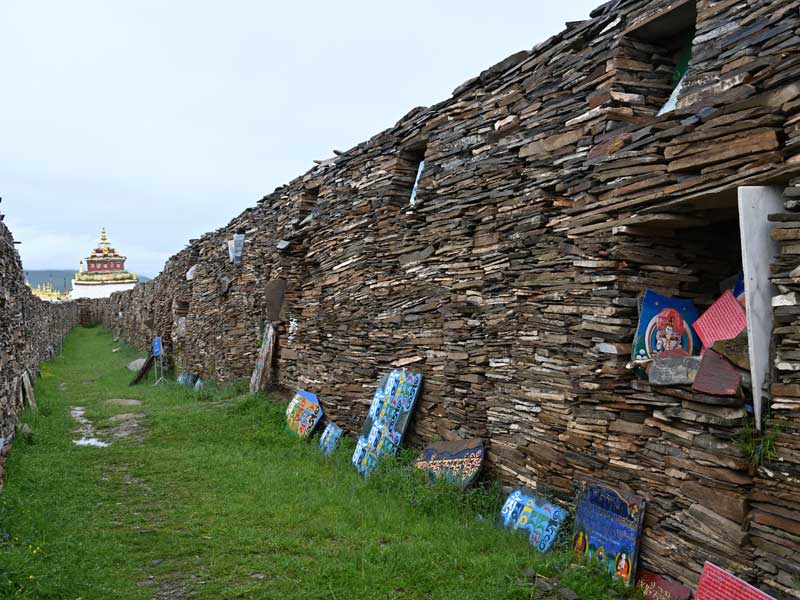
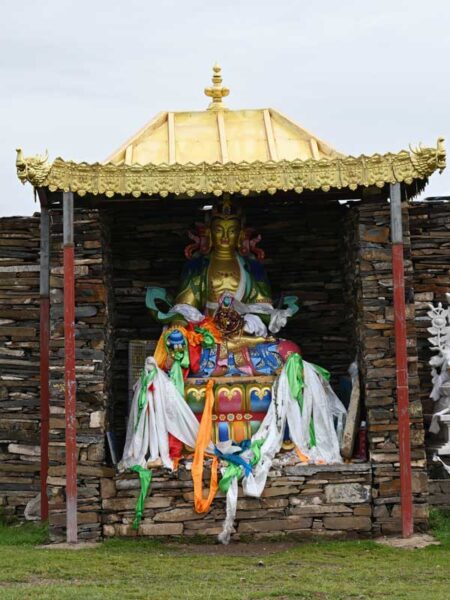
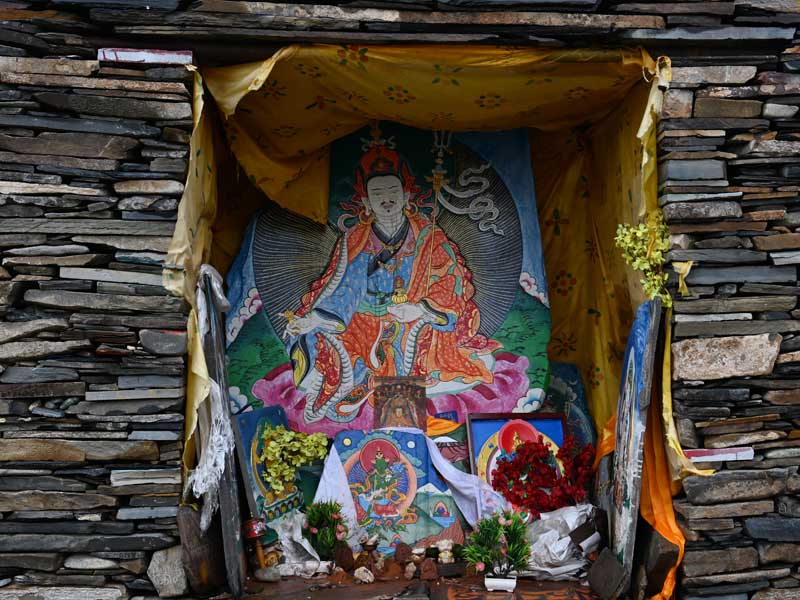
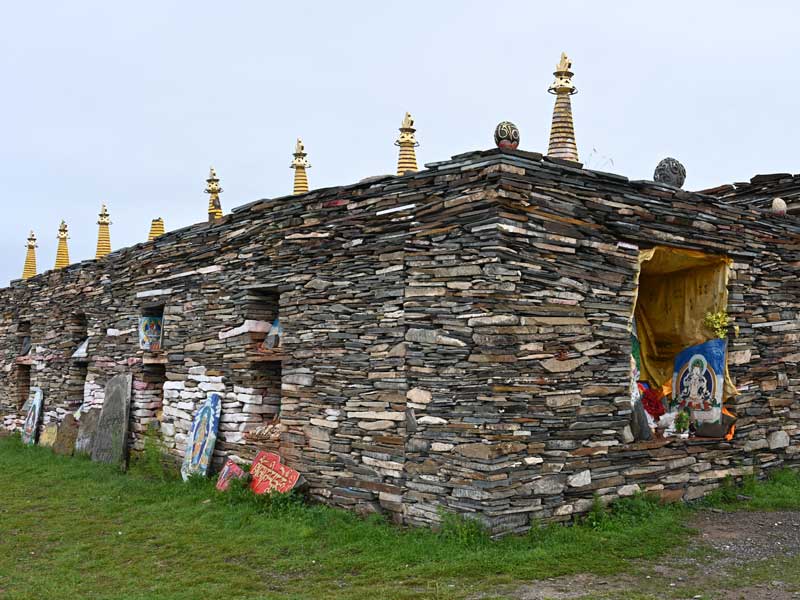
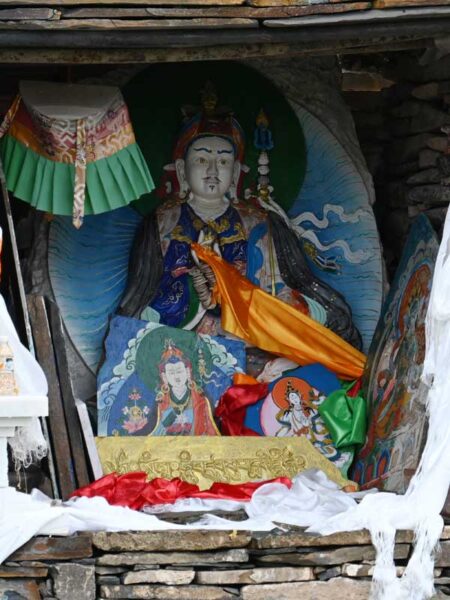
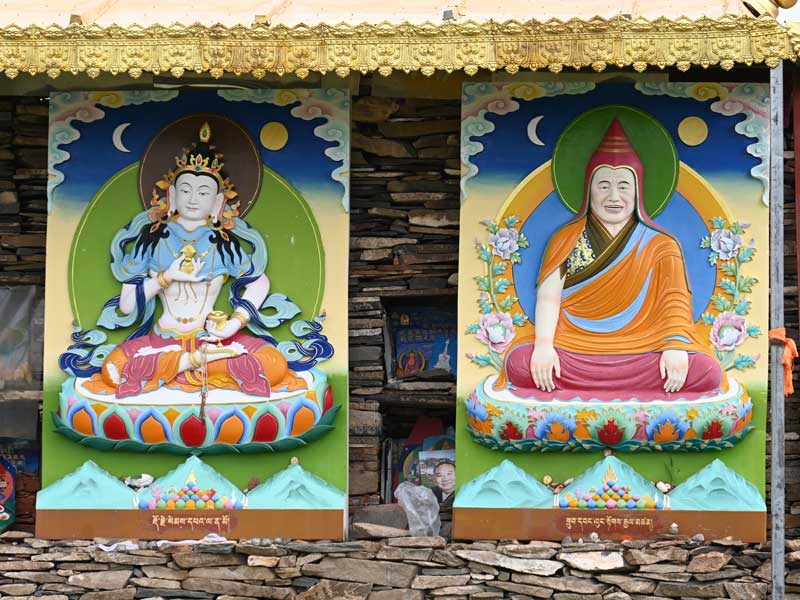
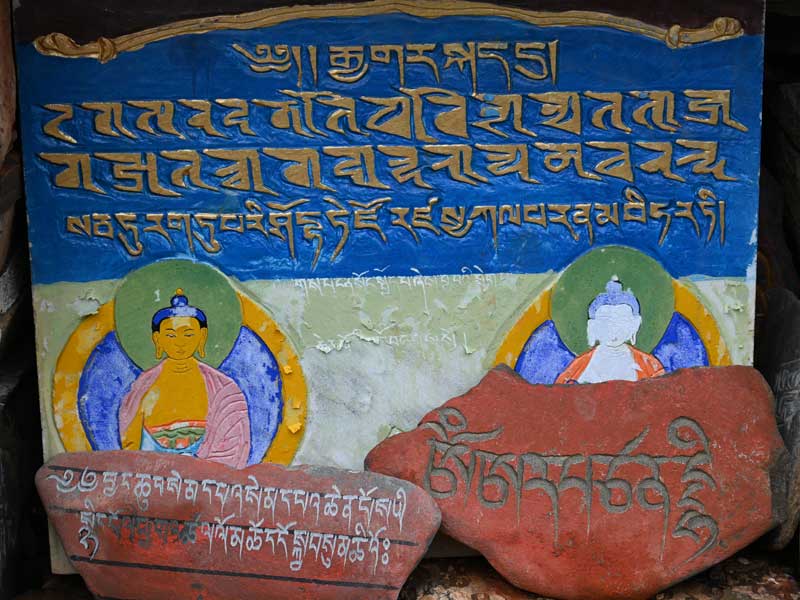
Introduction
The Tibetan people often create stone piles known as “mani piles” or “sacred piles” to pray for blessings and auspiciousness.
“Mani” is an abbreviation of the Sanskrit Buddhist scripture, the “Six-Syllable Mantra Sutra.” The six syllables represent the transcending of sentient beings across the six realms, dispelling six kinds of afflictions, practicing the six paramitas, attaining six forms of Buddha, and developing six kinds of wisdom, all of which are extraordinary merits.
Tibetan Buddhism views the Six-Syllable Mantra as the root of its scriptures, and it is also known as the “Six-Syllable Great Bright Mantra,” famously recited as “Om Mani Padme Hum.”
Originally, the mani piles were called “Manda,” meaning “Mandala,” and were made by stacking stones of various sizes, known in Tibetan as “Döben.”
Another type of mani pile features stones or stone slabs inscribed with images of Buddhas and the Six-Syllable Mantra, which is its most defining characteristic. The Six-Syllable Mantra, consisting of just six mystical characters, appears differently on each stone. Some stones are left in their natural state, while others are colored red, green, or yellow. These mani stones are then stacked into a long wall, known in Tibetan as “Mendang.”
Contents of the Mani Stone Carvings
On each stone of the Mani Wall, wise sayings of Buddhas and Bodhisattvas are engraved, along with scriptures such as the Vajrasattva Heart Mantra, portions of the Kangyur and Tengyur, the Sutra of Liberation, Tara Sutra, Longevity Sutra, and the Confession Prayer of the 35 Buddhas. These carvings embody the beautiful wish to bless all sentient beings and absolve sins.
In addition to scriptures, some Mani stones feature carvings of the Eye of Wisdom, deities, flowers, the sun, auspicious symbols, etc. Some stones are engraved with images of Buddhas or mythical creatures, with smooth lines and lively shapes, showcasing rich imagination. These carvings are the masterpieces of Tibetan folk artists.
On auspicious days, people gather near the Mani piles to perform Sang offerings (incense burning) and add stones to the piles. With sincere devotion, they touch their foreheads to the stones while silently reciting prayers. Over time, the Mani piles grow taller and taller.
Architectural Structure
Over hundreds of years, the Bage Mani Stone Scripture Wall was gradually built from individual stones engraved with scriptures and has a history spanning more than 300 years.
On both sides of the wall, multiple niches house colorfully painted Buddha statues called tsatsa. At regular intervals along the wall, spaces are enclosed by stone walls made from stacked Mani stones, resembling watchtowers on a city wall. At either end of the long wall, tall stupas stand, and in the middle section, 108 stupas are lined up in a long row, running parallel to the stone scripture wall. The Mani stones are laid flat and stacked, with only one or two lines of the scripture carvings visible on the sides of the stones, while the rest are embedded within the wall.
Prayer flags in five colors flutter in the wind atop the Bage Mani Stone Scripture Wall, and Buddha statues are enshrined in the niches along the wall. White stupas stand beside the Mani wall, while the nearby hillside is covered with prayer banners.
The Story of the Mani Wall
Bage Mani Stone Scripture Wall is divided into the “Wall of Good” and the “Wall of Evil,” each with its own story.
Legend has it that 300 years ago, a pair of lovers were forced to part due to the disparity between their wealth. The two decided to elope, but the young woman tragically drowned while crossing the Yalong River. Grief-stricken, the young man attempted to drown himself in the river but was saved by Bage Lama, who was practicing in the area, and was persuaded to take refuge in Buddhism. The young man gave the Lama the treasure left behind by the girl, and the Lama used these riches to commission craftsmen to build the “Wall of Good.”
The story of the “Wall of Evil” originates from a tale of betrayal. Two friends traveled together, but one plotted to kill the other for his wealth. Bage Lama intervened just in time, persuading the would-be murderer to abandon evil and embrace goodness. That man eventually became a devoted disciple of the Lama and reached spiritual enlightenment. He offered the ill-gotten wealth to the Lama, who used it to build the “Wall of Evil.”
The two walls are connected, and over time, more and more pilgrims visited, adding stones to extend the walls further and further.
The Bage Mani Stone Scripture Wall, this unique stone wall, bears the devout prayers and beautiful faith of Tibetan believers. It continues to stand on the vast grasslands of the Kham Tibetan region, radiating eternal religious glory and artistic charm through the ages.





Leave a Reply